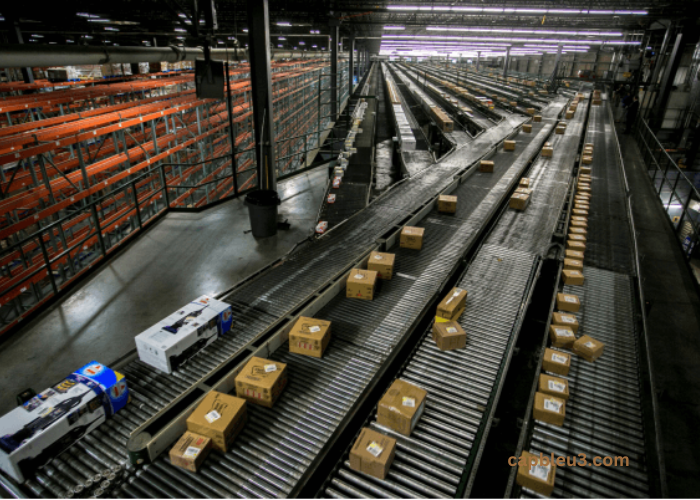
Conveyor belts make it easier to move products and raw materials throughout a facility between processing and packaging machinery. They are extensively utilized globally, reducing unnecessary manual handling to increase worker efficiency and safety.
Conveyor belts are used to transport components and finished commodities in the food processing industry. Conveyor systems are used similarly by pharmaceutical companies despite different packaging requirements.
Certain manufacturers utilize conveyor belt drive components to move raw materials from one part of the plant to another before they are finished, enabling the production and transfer of goods at the same time.
What Is A Conveyor Belt And How Does It Work?
An electrical device called a conveyor is used in various sectors to transfer goods or products from one location to another. Businesses managing heavy and dangerous commodities, raw materials, or fragile goods profit from these solutions. Strong conveyors, which are necessary for modern production and manufacturing lines, have been designed by conveyor belt makers to handle anything from enormous chemical drums to tiny pharmaceutical vials.
Although conveyors can take many different forms, the majority of them use electric motors or engines to power the belts, rollers, or slats that move the product. While most of us are accustomed to conveyors moving goods on a flat surface, some conveyor systems can also move goods overhead or with the assistance of side belts.
Which Industries Use Conveyors?
The main goal of roller, slat, and belt-type conveyors is to move items through factories faster and more efficiently. This saves money and time because less inefficient manual labor is needed. Many companies use conveyor belts with flat flex. The belts consist of a single, light layer and are smoothly driven by sprockets. Conveyor belts with Flat Flex are made of stainless steel and spring wire. The wire diameter ranges from 0.8 to 3.0 mm.
Since conveyors are so advantageous, numerous industries have embraced the technology, such as:
Pharmaceuticals Food and drink fillings Production Storage Transportation and logistics Mining and Agricultural Recycling Plastics manufacturing
Conveyors exist in a variety of shapes, sizes, and forms because these sectors have obvious advantages, and as a result, the worldwide conveyor industry is growing rapidly.
The Advantages Of Conveyor Belts
Using conveyors in a manufacturing or production process has several advantages. The primary advantage of these technologies over manual handling is their speed. They increase productivity and efficiency, especially for big plants or facilities where goods are transferred across multiple floors.
They improve safety in addition to saving money on employment costs, which may be even more significant. Nowadays companies like Wire Belt design conveyors that reduce the risk of strain injuries and accidents among workers who move heavy, fragile, and dangerous items.
Another advantage of conveyor systems’ small footprints is that they eliminate the need for businesses to grow into larger locations. For organizations whose production demands change, this is quite advantageous because you can instantly speed up the conveyors to meet production.
Conveyors continually feed containers into filling equipment and collect them for packing, which makes them particularly useful in automatic liquid filling procedures. This is particularly true when accumulation tables and unscrambling are combined with them.
Conveyor Types
While there are many other types of conveyors, three are very popular in the manufacturing industry:
- Conveyor rollers
- Conveyor slats
- Conveyor belts and mesh
While there are more types, these are usually more specialist. Examples of these are vibratory, skate wheel, and chain conveyors.
Businesses that deal with large production use rollers, slats, and belts.
How to Locate and Install Conveyors
It is rarely the simplest thing to modernize a manufacturing line than installing a conveyor system that is ready to go right out of the box. A company needs to know the ideal kind, arrangement, and pace. At this point, talking to experts who have experience across a range of industries is crucial.
Conveyor belt suppliers can help you figure out how to use your floor area best and integrate conveyors into your present production processes. They will assist you in determining whether to operate around corners using unscrambling tables, filling machines, accumulation, or conveyors.
In summary
For many manufacturing organizations, conveyors are the best option for safely transporting products between levels and across sites. They are the ideal transit alternative since they provide state-of-the-art safety safeguards that limit accidents and boost system efficiency.